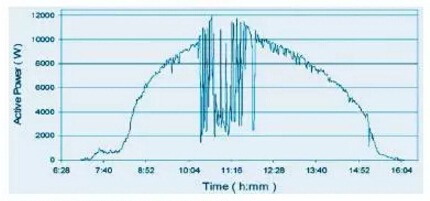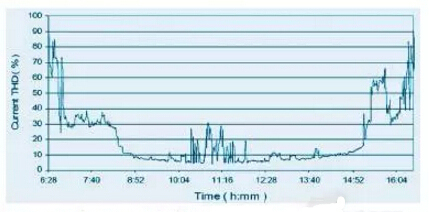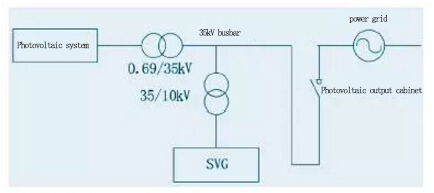Photovoltaic power generation: how to perform reactive power compensation?
Background of the project
With access to large-scale distributed photovoltaic systems, the influence of photovoltaic systems on the stability of power grids is increasing. For example, the uncertainty of weather and light intensity causes voltage fluctuations at the grid-connected point; when the grid fails, the photovoltaic unit may be disconnected from the grid due to a voltage drop that is too low and may cause the entire system to collapse in severe cases.
In order to improve the stability of photovoltaic system operation, reactive power compensation devices need to be installed when distributed photovoltaic projects are established to control the voltage of grid-connected points in the system. Static var generator (SVG) has been more and more used in photovoltaic systems due to its advantages of fast response time, high compensation accuracy, wide adjustment range, and low loss.
Application Status and Existing Problems of the Photovoltaic Industry
The power quality problems caused by grid-connected photovoltaic power generation systems mainly include harmonics, voltage fluctuations, and flicker. Due to the influence of factors such as the angle of light, ambient temperature, the installation position of photovoltaic panels, and cloud cover, the output power of photovoltaic power plants will vary, and the maximum rate of change may even exceed 10% of the rated value, resulting in instability of power generation. It affects the harmonics fed into the grid.

Photovoltaic system output active power change curve
The grid connection of photovoltaic power plants needs to be applied to inverters, and the control technology of inverters is also closely related to the quality of photovoltaic power generation integrated into the grid. When the inverter output is light-loaded, the harmonics will become significantly larger. When the output is below 10% of the rated output, the total harmonic distortion rate of the current will reach more than 20%.

Harmonic current THD diagram of photovoltaic power generation system
The power of photovoltaic power generation will affect the load characteristics of the power grid with the change in sunshine intensity. Its access will change the power flow direction of the power grid and will be applied to the planning and dispatching operation mode of the existing power grid. The connection of a large number of photovoltaic power generation systems to the grid terminal will aggravate voltage fluctuations and cause unstable operation of the system.
Solutions to power quality problems in the photovoltaic industry
In the face of power quality problems such as harmonics, voltage fluctuations, flicker, and low voltage ride-through generated by grid-connected photovoltaic power generation systems, SVG has the advantages of fast dynamic response time, continuously adjustable reactive power, and wide reactive power adjustment range. At present, when SVG is selected at the photovoltaic project site, it can be connected to 35kV busbar side by 35kV direct-mounted type and by the step-down transformer and 10kV series connection.
According to different control methods, the operation methods of SVG can be divided into constant current, constant voltage, load following, constant power factor, etc. In the constant current operation mode, the SVG keeps the reactive power at the grid-connected point constant according to the set current; Compensation, the power factor can be controlled within the set range according to the set value of the power factor; the constant voltage operation mode is SVG tracking the target voltage, and PI control is performed on the collected voltage and the target voltage to ensure the constant voltage of the grid connection point.

Photovoltaic system grid-connected structure diagram SVG photovoltaic field connection diagram



